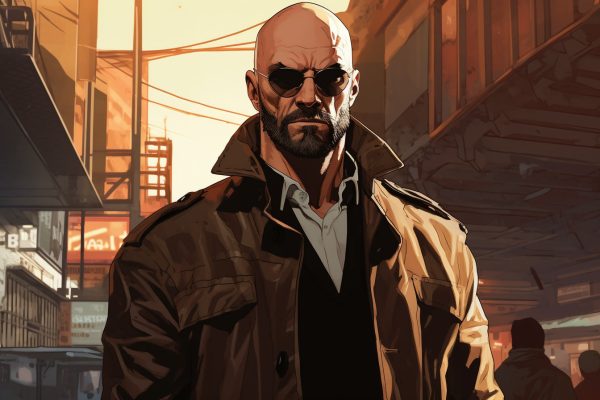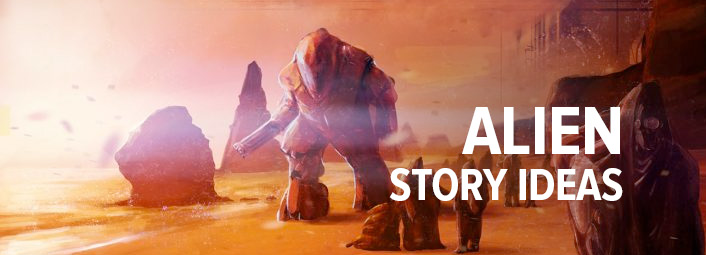100 Important Comic Book Terms
When was younger I thought I’d be the next great comic book artists. Didn’t see myself so much as a writer, but an illustrator. But that wasn’t meant to be and I did not pursue the art or the writing. Still, if I were to start writing them today, I’d want to know the all of the terms. So here’s a list of 100 important comic book terms.
Panel: A single drawing in a sequence of drawings that make up a comic book page. Panels are often bordered and arranged in a specific order to convey a story.
Splash Page: A single-page illustration that usually occupies an entire page, used for dramatic effect, often without panels or with minimal paneling.
Gutters: The space between panels where no artwork or text appears. They help in pacing and transition between scenes or actions.
Speech Bubble: A graphic element that contains characters’ dialogue or thoughts. They come in various shapes and sizes to indicate different speakers or types of speech.
Thought Bubble: A speech bubble used specifically to convey a character’s inner thoughts rather than spoken dialogue.
Caption: Text boxes used to provide additional information, narration, or commentary in a comic panel.
Onomatopoeia: Words that imitate sounds associated with their meaning (e.g., “Bang,” “Pow,” “Boom”).
Word Balloon: The overall term for speech bubbles and thought bubbles.
Action Lines: Dynamic lines or streaks drawn to convey movement or action in a static image.
Keyframe: The primary drawing in a sequence that establishes a specific moment in a story.
Inking: The process of adding ink to the penciled artwork, defining lines, and preparing it for printing.
Penciling: The initial sketching and drawing of comic book artwork before inking and coloring.
Lettering: The process of adding text, including dialogue, captions, and sound effects, to comic book panels.
Cross-Hatching: A shading technique using intersecting lines to create various tones or textures.
Splash Panel: A large, single panel that takes up a significant portion of a comic book page, often used for dramatic effect or to showcase a pivotal moment.
Background: The setting or scenery behind the main characters and action in a panel or page.
Foreground: The part of the panel or page that appears closest to the viewer, often used to draw attention to specific elements.
Ink Wash: A technique that involves applying diluted ink to create a grayscale effect or add shading.
Letterer: The individual responsible for adding text, dialogue, and sound effects to comic book pages.
Storyboard: A sequence of drawings or panels used to plan the layout and progression of a comic book or graphic novel.
Layout: The arrangement of panels, text, and artwork on a comic book page.
Continuity: The consistency of the story and its elements across different issues or volumes of a comic book series.
Cover Art: The illustration or design featured on the front of a comic book, often used to attract readers’ attention.
Variant Cover: An alternate cover for a comic book issue, often created by a different artist from the primary cover.
Crossover: A storyline that involves characters from different comic book series or universes.
Retcon: Short for retroactive continuity, it refers to altering previously established facts or events in a story.
Backup Story: A secondary story included in a comic book issue alongside the main storyline.
Annual: A special, usually larger-sized issue of a comic book series released once a year.
One-Shot: A standalone comic book that is not part of an ongoing series.
Trade Paperback (TPB): A collection of comic book issues or story arcs bound together in book form.
Graphic Novel: A book-length comic that tells a complete story, often intended for a more mature audience.
Lettering Guide: Templates or tools used by letterers to ensure consistent text placement and size.
Balloon Tail: The pointer that connects a speech or thought bubble to the character speaking or thinking.
Colorist: The artist responsible for adding color to comic book artwork.
Cover Swipe: An illustration that imitates or pays homage to a famous comic book cover.
Diamond Distribution: A major distributor of comic books and related merchandise to retailers.
Solicitation: A pre-release description and information about upcoming comic book issues provided to retailers and readers.
Trade Dress: The consistent design elements (such as logos, fonts, and layouts) that identify a specific comic book series or publisher.
Manga: Japanese comic books or graphic novels with distinctive artistic and storytelling styles.
Sound Effects: Visual representations of sounds through words or symbols in a comic panel.
Editor: The individual responsible for overseeing the production and quality of a comic book.
Gag Strip: A short, humorous comic strip typically focusing on a single joke or punchline.
Publisher: The company responsible for producing and distributing comic books.
Indie Comics: Comic books produced by independent creators or smaller publishers.
Character Design: The process of creating the appearance and visual traits of a comic book character.
Fumetti: A style of comic storytelling that uses photographs with added captions and speech bubbles.
Pin-Up: An illustration of a character or scene, often included as a standalone image in a comic book.
Decompression: A storytelling technique that stretches storylines across multiple issues by focusing on smaller story elements.
Filler: Content included in a comic book to fill space, often unrelated to the main storyline.
Variant Edition: A different version of a comic book issue with alternate cover art, sometimes with additional content.
Bleed: Artwork or color that extends to the edge of a comic book page without a border.
Foil Cover: A comic book cover with metallic or reflective elements for added visual appeal.
Splash Spread: A double-page spread featuring a single, impactful image or scene.
Speed Lines: Lines used to convey movement or speed in a comic panel.
Halftone: A printing technique that uses dots to create gradients or shades of gray in comic book artwork.
Splashback: A flashback sequence presented in a single, visually striking panel or page.
Mini-Series: A limited series of comic book issues with a predetermined number of installments, usually telling a complete story.
Backup Feature: Additional content, such as a short story or character profile, included in a comic book issue.
Credits Page: A page in a comic book that lists the creators involved in producing the issue.
Ink Brush: A tool used by artists for inking, providing varying line thicknesses and textures.
Panel Layout: The arrangement of panels on a comic book page, determining the flow and pacing of the story.
Artist Alley: A section at comic book conventions where artists and creators showcase and sell their work.
Speech Balloon Tail: The part of a speech balloon that points to the character speaking.
Sound Effect Lettering: The stylized text used to represent various sounds within a comic panel.
Cover Price: The retail price printed on the cover of a comic book.
Glossy Cover: A comic book cover with a shiny, reflective finish.
Digital Comic: Comic book content available in digital format for reading on electronic devices.
Fan Art: Artwork created by fans based on existing comic book characters or stories.
Title Page: The page in a comic book that displays the title, issue number, and creative team.
Editorial Cartoon: A single-panel or strip cartoon that satirizes current events or political situations.
Anthology: A collection of comic book stories or series published together in a single book.
Mascot: A character or symbol associated with a particular comic book publisher.
Manhua: Chinese comic books or graphic novels.
Trade Dress Variation: Alterations in the design elements of a comic book cover while retaining brand identity.
Retelling: A new version of a previously told story with alterations in plot, characters, or setting.
Webcomic: A comic published primarily on the internet.
Variant Subscription Cover: A cover available exclusively to subscribers of a particular comic book series.
Exclusive Cover: A cover available only through specific retailers or events.
Cover Gallery: A section in a comic book featuring various cover art variants.
Trade-In: Exchanging older comics for credit towards purchasing new ones at comic book stores.
Special Edition: A version of a comic book with added content, such as interviews or behind-the-scenes features.
Sticker Variant: A comic book cover with an affixed sticker, often denoting a special feature or event.
Marvel Omnibus: A collection of multiple storylines or issues from a specific Marvel Comics series in a single, oversized volume.
Gutterless Layout: A comic page design that lacks traditional gutters between panels, creating a seamless visual flow.
Character Arc: The growth and development of a character’s personality and traits throughout a story.
Inktober: An annual challenge encouraging artists to create ink drawings throughout October, popular in the artistic community.
Editorial Direction: The overarching vision or theme guiding a comic book series.
Cameo Appearance: A brief appearance of a character in a comic book unrelated to the main storyline.
Dailies: Comic strips published daily in newspapers.
Spinner Rack: Rotating display racks used in stores to showcase and sell comic books.
Trade Dress Logo: The consistent logo design used on comic book covers to signify a particular series or publisher.
Hardcover Edition: A sturdy, durable format of a comic book collected in a hardbound book.
Dynamic Posing: Artistic depiction of characters in action-oriented or visually striking poses.
Creator-Owned: Comic book properties wholly owned by their creators rather than the publishing company.
Foreign Edition: Translated versions of comic books for international markets.
Lettering Font: The style of typeface used for text in a comic book.
Artist Signature: The artist’s personalized mark or name often found on comic book artwork.
Variant Logo: A different version of a series logo or title design used on special comic book editions.
Splash Art: Highly detailed and visually impressive illustrations used for promotional purposes or covers.
Back Matter: Additional content included at the end of a comic book, such as creator interviews, sketches, or previews.
Let us know what you think about our ideas! Comment below to give us your opinion, add onto an existing idea, or submit one of your own!









